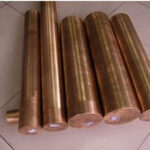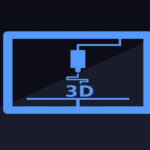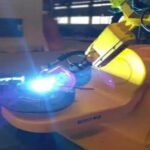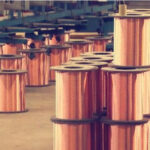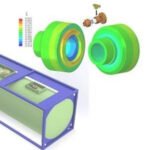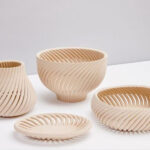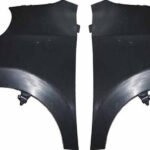Deburring and finishing of processed and manufactured parts are essential steps in the manufacturing process, but they are often overlooked. As a result, some stores still handle this task as they did in the last century, relying on manual deburring and polishing methods instead of using more modern, automated, and predictable methods. This is time-consuming and wasteful. It can also lead to inconsistent quality of parts, and even increase the machine downtime due to the idleness of the CNC for the operator to participate in the polishing wheel and the drilling machine. To make matters worse, a simple error at this stage of the manufacturing process can mean scrapped parts that will take hours or even days to produce.
The Diamond Burnish face milling tool of Cogsdill Tool Products works very similarly to that of a face milling cutter, but its design purpose is to polish the surface to a finish of unit Ra.
This article does not explain in detail the dozens of deburring and finishing techniques available today, but it will cover some of the more common techniques. For example, Timesaver or an equivalent rotary brush machine is a good way to deburr many flat workpieces. Belt-type versions of these machines perform similar tasks by linearly lining or abrasive parts, while drum and vibrating bowl polishers equipped with abrasive media can handle the most difficult burrs on machining, stamping or laser cutting parts.
There is also thermal deburring, which is an unlikely process and requires the application of explosives to remove the burrs. Electrochemical machining (ECM) uses electrolyte to dissolve burrs and dissolve burrs in surprisingly precise ways. Abrasive flow machining (AFM) is commonly used in the automotive and hydraulic industries to deburr and polish complex internal part features, just like sandblasting can smooth all surfaces from camshafts to cargo ships.
Nonwoven Abrasive Technology
Table of Contents
Then there are belts, discs, brushes and other abrasive media, all of which will shorten the working time for burrs and rough surfaces. Norton | Nonwoven Abrasives Senior Product Manager Michael Radaelli is an expert in these areas. Saint-Gobain Abrasives of Worcester, Massachusetts, pointed out that the industry will continue to develop more functional and productive abrasives, including the company’s Rapid Prep XHD series of non-woven abrasive products. Radaelli said: “By using modern abrasive particles, bonding methods and other technological improvements, the shop can usually reduce the number of steps required to achieve the desired surface quality.” “This helps reduce labor time and reduce abrasive inventory, especially Reduce operator fatigue when performing right-angle grinding.”
He suggested that manufacturers make some common mistakes when choosing abrasives. For example, when performing deburring operations, operators must have the required skills and experience to ensure that they will not change the geometry and size of the part, lest they inadvertently scrape the workpiece. This is usually caused by using too rough abrasives, applying too much pressure, or simply choosing the wrong abrasive altogether. Similar problems can also occur when removing parting lines on castings, or in the mixing and finishing operations of welded products.
Radaelli pointed out the various field tests conducted with Norton’s new products. After an emergency vehicle manufacturer switched to XHD abrasives, its cutting speed increased by 26%, and the abrasive life of the aluminum ladder series doubled. A well-known locomotive manufacturer cancelled two manual grinding operations on welded carbon steel structures. A computer cabinet supplier used non-woven abrasives to increase the area of each wheel from 480 inches to 1,040 square inches (3,097 to 6,710 square centimeters), with leeway.

Non-woven abrasive technology is also becoming more and more popular in other finishing operations, especially cylindrical grinding and centerless grinding. Ladali said that there are many examples showing that compared to traditional resin bonded and vitrified grinding wheels, Norton fast coating non-woven convolute grinding wheels improve surface finish and extend the time between dressings. He said: “If someone wants to remove 1/8 inch of material from the workpiece, this is not the right wheel for them. However, in more general cases, customers need to perform finishing and increase productivity. In terms of part quality, We strongly encourage them to step out of their comfort zone and focus on more modern high-performance abrasives.”
Norton Rapid Finish universal gyro wheel can flexibly perform light deburring and mixing work, remove deep scratches or surface irregularities, and produce a uniform surface.
Grinding
Of course, it is usually possible to completely eliminate these types of grinding operations. According to Maury West, vice president of sales and marketing for Cogsdill Tool Products in Camden, South Carolina, he pointed out that roll polishing is an effective method that can produce a single-digit Ra surface finish, consistent sizing and Harden CNC lathes or machining centers on almost any surface. Moreover, it becomes much easier.
He said: “About a year ago, we launched Universal Diamond Polishing Tools (UDBT), and they have been developing rapidly since then.” “It is usually rounded, replaceable diamond tips and indexable heads. The square shank tool can be adjusted by 90o in 15o increments on the left or right. We also provide a standard Capto C6 shank. This can polish the surface, contour and inclined surface, and if the hole is large enough, the internal characteristics can reach a certain level depth.”
West explained that UDBT can be used on any metal before HRC in the mid-1940s. Like all polishing tools, it works by “cold flow” to machine the peaks of the surface, essentially turning mountains into flat grasslands. Since it displaces the material, the diameter of the workpiece will decrease accordingly during the polishing operation. For softer metals, such as aluminum and mild steel, the roughness will reach 10 µin per 10 Ra-in other words, polishing a shaft with a surface roughness of 100 Ra to 10 Ra or less will hit 0.001″ (0.0254 mm) Metals with harder diameters, such as stainless steel and tool steel, Inconel and other rare metals, account for about half.
For flat surfaces, West recommends using the “Diamond Polished Face Mill” tool (DBFM). As the name suggests, DBFM is similar to a plane milling cutter, its function is similar to that of a plane milling cutter, and it is designed to use a replaceable diamond blade similar to the above-mentioned UDBT to polish a flat surface. West said: “We have been able to obtain single-digit Ra finishing on a 3′[0.914 m] long steel plate, and have eliminated the residual mold marks common in plane milling and thin-wall milling plants.” “With polishing or grinding. In comparison, this has proven to be more cost-effective and less time consuming. In addition, since no material is removed by sanding, this is an environmentally friendly process.”
Punching and deburring
Cogsdill also offers a variety of mechanical deburring tools, including one-piece “clothes peg” Burr-Off, spring-loaded Burraway and Micro Burraway, and Ellipti-Bur for curved or angled surfaces. All tools use simple in and out actions to deburr both sides of the hole in one processing, which can be done on a CNC machine or manually. Provide carbide and HSS blades with diameters ranging from 0.040 inches (1 mm) to 2.0 inches (50.8 mm).
Headquartered in Hayward, California, JW Done Corp. is another supplier of hole deburring tools that specializes in deburring at intersections deep inside manifolds, valve bodies, and other challenging areas.
General Manager Stan Kroll described the company’s ORBITOOL cross hole deburring tool as a hemispherical tool surrounded by a polished metal ring or disc and connected to a flexible shaft: in manual or CNC operation, the shaft exerts constant pressure; fine-tooth milling cutter Can remove very large rigid burrs; the disc protects the adjacent surface of the intersection of the hole.
He said: “This is both self-correction and self-discovery.” “Whenever the tool enters the hole, it will slide on the disk until it encounters a burr. Since the shaft is a spring, it allows the disk to slide over the burr, and then The cutter removes the excess material there. We also have a double-sided ORBITOOL that can deburr the top of the hole and any internal intersections.”
In recent months, ORBITOOL’s product lineup has continued to grow. The 12-inch (30.48 cm) long tool used previously has now become a standard product. In order to maintain sufficient radial pressure, the shaft diameter of these tools is shorter than 6 inches (30% larger). 15.24 mm) long counterpart. Kroll explained that the tool diameter of both lengths can be between 0.055 and 0.375 inches (1.40-9.53 mm), and the method of operation remains the same. “The heavier shaft also makes users more aggressive, which is especially important for removing heavy burrs from large diameter holes.”
Internal plating operations
Although they do not belong to the metal removal category, electroplating, spraying and coating operations can also be considered as finishing processes. One of them is black oxide, which is a popular method of protecting the surface of parts. Some people call it gun blue. Unlike competitive and usually more expensive processes (for example, nickel and chromium plating, powder coating, and most anodizing processes), black oxide hardly changes the size of the part and can be completed with minimal equipment investment.
Birchwood Technology’s CNC black oxidation finishing system uses an integrated programmable hoist and tank production line to automatically process steel components. It operates as an automatic control unit, eliminating the labor costs associated with manual production lines.
“Whether you are talking about black oxide or alternative processes such as zinc phosphate, you are looking for deposits of one to two microns.” According to Jesse Walker, general manager of Birchwood Technology in Eden Prairie, Minnesota ( Jesse Vouk) said that these products and other protective finishing technologies are suppliers of chemicals and equipment. “We also have a large number of room temperature products. These products are mainly cosmetics, but also provide various levels of lubricity and corrosion resistance. For those who manufacture hardware items, some oil and gas components, and those who require low-cost but durable protective agents For people, this is an excellent choice.”
Since these processes are considered low-temperature processes and do not require electrodes, they are easily introduced into the interior like most electroplating operations. Vouk said: “Usually, there will be several heated storage tanks in the production line, starting with alkaline cleaners to remove any processing fluids, grease and other contaminants.” “For black oxides, the solution is between 200 and 210. °F (93.3 to 98.9°C). It is a direct substitute for the traditional thermal black oxide process that operates at 290°F [143.3°C], so it is in terms of worker safety and waste disposal It is far less harmful.”
Link to this article: What are the methods of deburring and finishing operations?
Reprint Statement: If there are no special instructions, all articles on this site are original. Please indicate the source for reprinting:https://www.cncmachiningptj.com/,thanks!
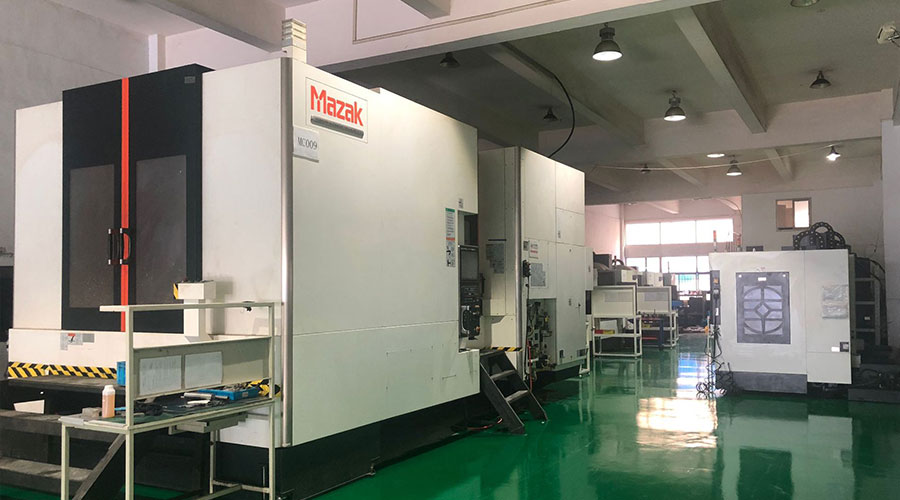 Sheet metal, beryllium, carbon steel, magnesium, 3D printing, precision CNC machining services for heavy equipment, construction, agriculture and hydraulic industries. Suitable for plastics and rare alloys machining. It can turn parts up to 15.7 inches in diameter. Processes include swiss machining,broaching, turning, milling, boring and threading. It also provides metal polishing, painting, surface grinding and shaft straightening services. The production range is up to 50,000 pieces. Suitable for screw, coupling, bearing, pump, gearbox housing, drum dryer and rotary feed valve applications.PTJ will strategize with you to provide the most cost-effective services to help you reach your target,Welcome to Contact us ( [email protected] ) directly for your new project.
Sheet metal, beryllium, carbon steel, magnesium, 3D printing, precision CNC machining services for heavy equipment, construction, agriculture and hydraulic industries. Suitable for plastics and rare alloys machining. It can turn parts up to 15.7 inches in diameter. Processes include swiss machining,broaching, turning, milling, boring and threading. It also provides metal polishing, painting, surface grinding and shaft straightening services. The production range is up to 50,000 pieces. Suitable for screw, coupling, bearing, pump, gearbox housing, drum dryer and rotary feed valve applications.PTJ will strategize with you to provide the most cost-effective services to help you reach your target,Welcome to Contact us ( [email protected] ) directly for your new project.
Link to this article:What are the methods of deburring and finishing operations?
Reprint Statement: If there are no special instructions, all articles on this site are original. Please indicate the source for reprinting.:Cnc Machining,Thank!^^

